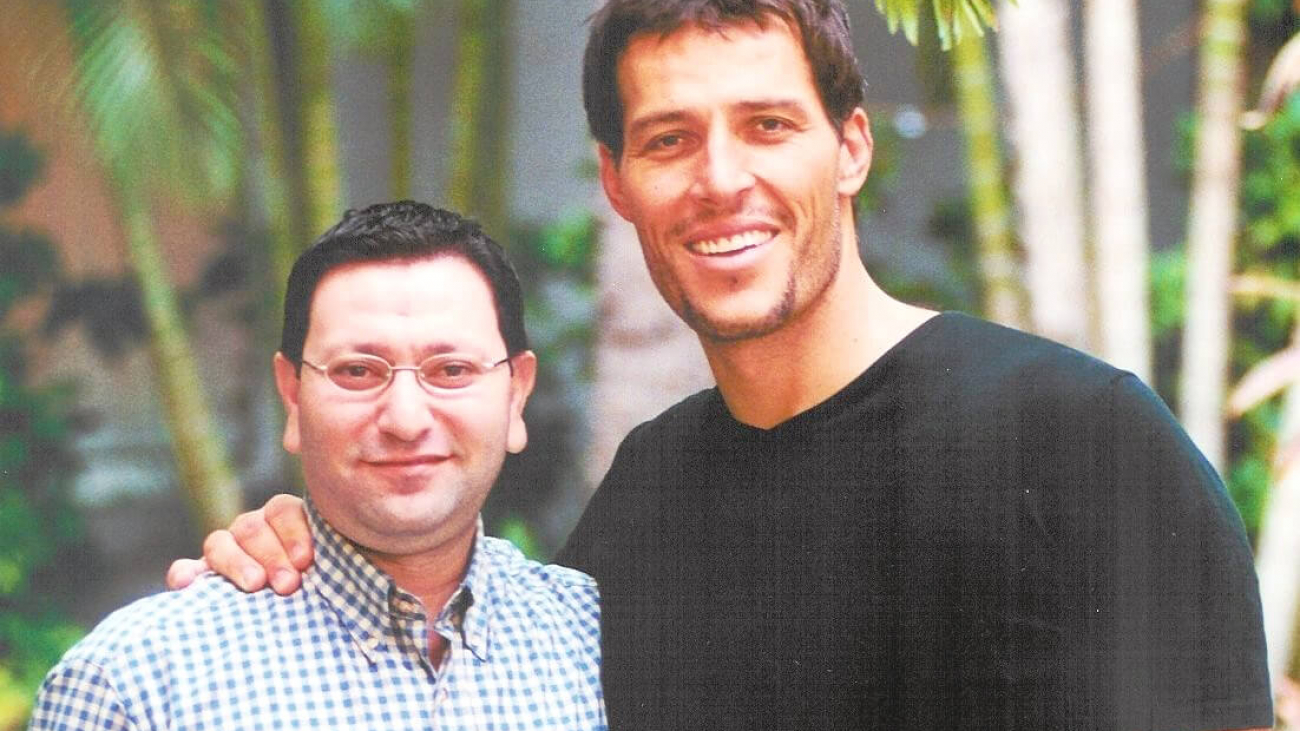- I came to know about Tony Robbins in 1988, I bought his 30 days “Personal Power” cassette program by Guthy-Renker Corporation. It was a turning point for me. The amount of motivation and inspiration Tony Robbins gave me is beyond belief. There was no internet at that time,
- I got in touch with his office and my relationship with his office manager at that time Ralph Williams. I was delighted to receive an inspiring letter from Tony with his books “Unlimited Power” and “Awaken the giant within” autographed to me. I studied each and everything he teaches. I then traveled to his courses got to meet him and I accompanied many of my clients to his courses. It has a great impact in my life and down below there are 10 lessons I learned from Tony
1.Whatever results you want in life, just look for someone who has achieved those results and borrow benefits, you do not have to reinvent the wheels
2.By altering your body’s physiology, you can achieve an immediate change of your emotional state. The mind will follow whatever state your physical body is in and not vice-versa.
3.Ask specific questions of yourself (in your self-talk) to direct and control your attention to the various aspects of the human experience. The quality of your life is in direct proportion to the quality of the questions you ask of yourself.
4.Get leverage to create personal change by associating an old behavior with massive pain and the desired new behavior with massive pleasure. Tony is a big believer in the pain/pleasure principles of life and this applies in business as well.
5.When you get stuck, interrupt your limiting pattern by doing something totally unexpected.
6.You can condition your behavior by visualizing it over and over again. This is not exactly unique to Tony Robbins, but he does reinforce this message in all of his products.
7.Goal-setting strategy: Know your end outcome; Take massive intelligent action; Have sensory-acuity to notice if you are getting the results you desire and if not; change your approach, and change *until* you get your end outcome.
8.Create a “Compelling future” by vividly imagining your end result to generate enthusiasm and power within yourself. The past does not equal the future. Find beliefs that support your goals and desires.
9.Principles of CANI! CANI stands for Constant And Never-ending Improvement. It’s a basic tenet of Tony Robbins.
10.Problems are gifts that we should appreciate in life. It is ok to fall from the sky, (And he did fall many times), but we should never lose our drive to succeed










